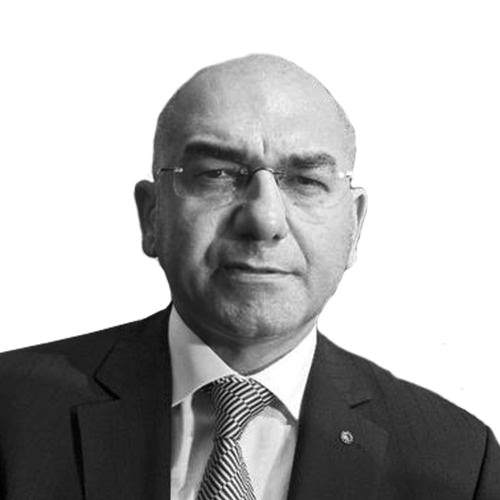On Sunday in the provincial assembly elections of one of the five provinces in eastern Germany, Thuringia, something happened for the first time.
On Sunday in the provincial assembly elections of one of the five provinces in eastern Germany, Thuringia, something happened for the first time. The Left Party – which is the continuation of the Socialist Unity Party of Germany (SED), the former socialist governing party of East Germany – came out as the first party in the polls. Let’s write it more clearly for our readers: The Left Party, still the hope of communists and a party that aims to see a socialist Germany and that has problems with today’s Germany received 31% of the vote to become the winner. This is a first for Germany. The Left Party, in reality, received a high number of votes in the five provinces formerly constituting East Germany; however, despite gains, it never was able to come out on top. This Sunday it finally reached its goal.
The Left Party, which has problems with Germany’s EU membership, is against NATO and the embargo against Russia, and wants to change Germany’s economic system, received one-third of the votes and showed that the balance is shifting in Germany.
The Left Party had formed a coalition government with the Social Democratic Party (SPD) and the Greens in Thuringia under the presidency of party leader Bodo Ramelow. Thanks to this coalition government, the Left Party managed to receive the votes of the SPD and the Greens. As the SPD and the Greens lost votes, the Left Party became the winner. Cooperation with radicals again benefited the radicals. If this were all, that would be fine – but it gets worse.
The second most successful party in the Thuringia provincial assembly elections was the far-right Alternative for Germany (AfD). The AfD came in second with 23.4% of the vote. AfD Thuringia President Bjoern Hoecke, which even the AfD Berlin executives find to be rather too “radical,” managed to receive one-fourth of the votes with far-left and populist slogans. The AfD’s mindset represented by Hoecke, which the Left Party and the Greens identify as “fascist,” managed to increase its votes by 12.8 percentage points from the last elections.
The AfD of Bjoern Hoecke is against Europe and the EU. It seems necessary for me to write that Hoecke does not have “good intentions” for refugees and Muslims. I think everything could easily be understood if I said that, when compared to Marie Le Pen, Bjoern Hoecke would be considered a liberal.
In short, in Germany’s Thuringia province, two parties that are “not identified as democrats” by German center parties, one from the far-right and another from the far-left, received a total of 54.4% of the vote.
Although these two parties are “enemies,” they have similar views when it comes to most subjects. When it comes to opposition to Europe, the EU and Turkey, they are not very different. However, when it comes to the PKK, the Left Party is supportive of the terrorist group and its offshoots, such as the People’s Protection Units (YPG), taking photos with their flags in the assembly; whereas the AfD outrightly opposes the terrorist group. It is not possible for them to come to an agreement on this matter. The Left Party is not against foreigners that are supportive of terrorism. The AfD, on the other hand, has problems with all foreigners.
While the center parties’ misled policies that do not produce trust among voters is causing this picture, their situation is also rather bad.
In the Thuringia provincial assembly elections, the Christian Democratic Union (CDU) lost around 11.7% of its votes and was able to gain only 21.8% of the vote. However, the CDU was the strongest party in this province for many years.
The SPD has been in a rather bad situation for the last couple of years and is still losing. By losing 4.2% of the votes, it only managed to receive 8.2%. The SPD, which was only able to gain 13% of the vote on the federal level, received only around 8% of the votes in eastern Germany.
The Greens, who became the first at the federal level, were unable to find much support in eastern Germany. With 5.2% of the vote, they barely managed to stay in the assembly.
The Liberals’ situation is comedic. The Free Democratic Party (FDP), for the first time, has managed to enter a provincial assembly in the east of Germany. By only receiving five more votes, it managed to reach the 5% vote range. Despite this, the FDP was very happy. Thanks to the 5%, they managed to enter the Thuringia provincial assembly and a coalition government might be formed thanks to them.
For now, it seems rather difficult to form a government in the Thuringia provincial assembly, where the Left Party has 29 members, the AfD has 22, the CDU has 21, the SPD has eight, the Greens have five and the FDP has five.
In the 90-member assembly, in order to form a government at least 46 members of parliament are needed. The Left Party, the SPF and the Greens were only able to reach 42. The FDP refuses to create a coalition with the Left Party, while the CDU refuses a coalition with the Left Party and the AfD.
We will see what kind of minority government or coalition solution they will find.
However, the state of Germany’s federal government – where in recent times we have seen the foreign minister and the defense minister voicing wildly different opinions regarding the safe zone in northern Syria – is not bright. As the center parties lose the trust of the voters, radicals are winning. This course of events is not good for Germany!
